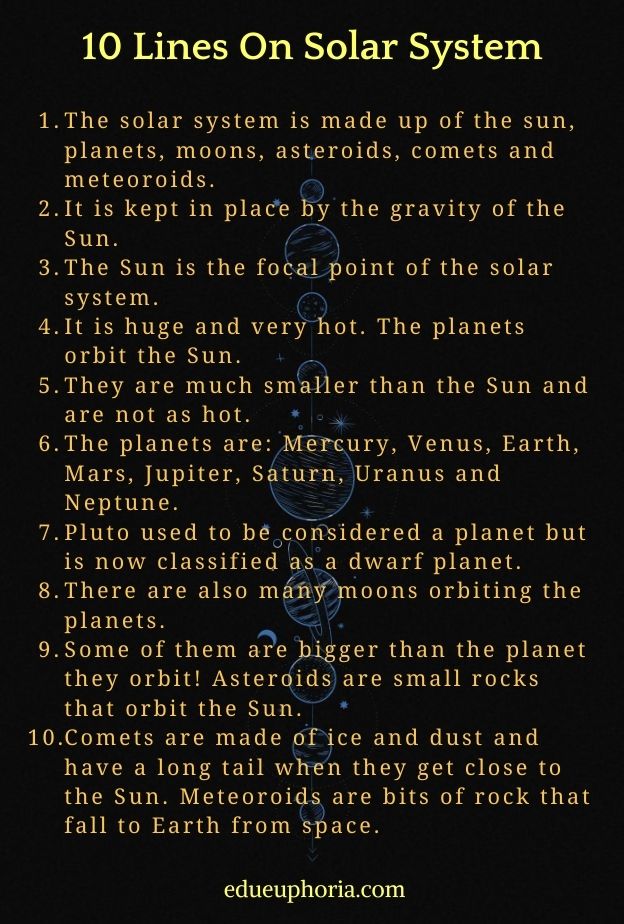A star and every object in its orbit make up a solar system. This includes planets, moons, asteroids, comets, and meteoroids. Most solar systems have only one star, our own Solar System has one star called the Sun. Here are 10 lines on solar system in English:
10 Lines On Solar System

- The solar system is made up of the sun, planets, moons, asteroids, comets and meteoroids.
- It is kept in place by the gravity of the Sun.
- The Sun is the focal point of the solar system.
- It is huge and very hot. The planets orbit the Sun.
- They are much smaller than the Sun and are not as hot.
- The planets are: Mercury, Venus, Earth, Mars, Jupiter, Saturn, Uranus and Neptune.
- Pluto used to be considered a planet but is now classified as a dwarf planet.
- There are also many moons orbiting the planets.
- Some of them are bigger than the planet they orbit! Asteroids are small rocks that orbit the Sun.
- Comets are made of ice and dust and have a long tail when they get close to the Sun. Meteoroids are bits of rock that fall to Earth from space.
Also read: 10 lines on importance of time
Essay On Solar System
There are many reasons why the solar system is important. For one, it is the only place in our universe where we know for sure that life exists.
Furthermore, the solar system contains our planet Earth, which is the only place in the universe known to sustain life. Finally, the study of the solar system can teach us a great deal about our place in the universe and the history of our planet.
The solar system is made up of the sun and all of the objects that orbit around it. These objects include planets, moons, asteroids, comets, and meteoroids. By far the largest object in the solar system is the sun. It contains more than 99% of the total mass of the solar system. The planets orbit around the sun because of its immense gravity.
The Earth is the third planet from the sun and is the only planet known to sustain life. It is also the largest of the terrestrial planets (planets with solid surfaces). The Earth has one moon that orbits around it. The innermost planet in the solar system is Mercury. It is also the smallest planet.
Mercury has no moons and a very thin atmosphere. Venus is the second planet from the sun and is similar in size to Mercury. However, it has a very thick atmosphere that causes it to have a very high surface temperature. Venus also has no moons. The next two planets, Earth and Mars, are very different from each other.








